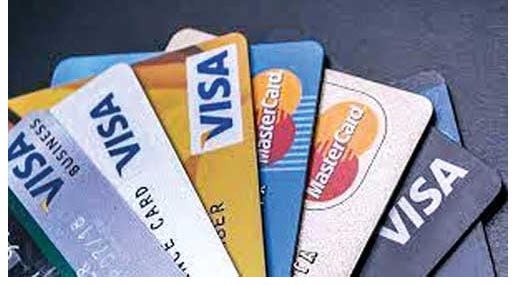The change in card balances through the end of July provided a glimpse of the large-scale pullback in consumer spending amid skyrocketing prices of everyday goods, as Sri Lanka joined the club of the world’s basket cases, which includes countries with runaway prices.
According to Central Bank data, the July credit card balance fell by a massive Rs.3.96 billion, the largest in recent months, tipping the year-to-date change to a negative Rs.564 million, indicating that banks are bracing for smaller loan books and balance sheets when they close their books for the year than when they began the year.
Licensed commercial banks had a cumulative outstanding credit card portfolio of Rs.132.72 billion at the end of July, up from Rs.133.29 billion at the start of the year.
However, it remains to be seen whether the July slump is a good indicator of what is to come in the coming months, as the acute fuel shortage that engulfed the first three weeks of the month may have distorted the figure as people began working from home, reduced travel, and drastically reduced spending at restaurants, hotels, and other recreational activities.
In any case, the large-scale reduction in consumer spending is the result of the Central Bank’s broader efforts to destroy demand in order to reduce inflation, which was running at 67 percent nationally in the year through July.
Meanwhile, the June quarter earnings season, which ended about two weeks ago, provided a preview of what could come in the second half of the year, with most banks reporting muted growth in loans, which were also largely due to one-time massive foreign currency translation differences caused by the rupee’s free fall.
While consumers are cutting back on purchases due to rising prices as they feel the pinch on their wallets, banks have tightened their credit standards, making borrowing unaffordable and inaccessible to the vast majority.
Credit card interest rates, for example, have more than doubled in less than six months to 36 percent, effectively rendering card spending non-viable and trapping those who do spend on cards in a debt spiral.
Furthermore, some banks have already reduced pre-approved limits for their cardholders, citing difficult macroeconomic conditions in order to reduce what could become a hurricane of non-performing loans, while others are considering similar moves to mitigate any large-scale fallout from potential defaults.
Bank earnings took a bigger hit in the second quarter, with some banks reporting losses primarily due to massive loan loss provisions and holdings of foreign currency denominated financial assets, which increased multifold from last year’s levels.
While credit card spending does not provide a close proxy for overall consumer spending in the country due to the extremely low number of cards in use, it does provide a distant gauge of changing spending patterns among salaried individuals.
However, overall consumer spending has plummeted, with at least two-thirds of the population losing access to three meals a day after the economic crisis pushed a large swath of the population into poverty.
Meanwhile, the number of cards in circulation fell by 2, 927 in July, following a drop of 7,507 in June, as banks held off on promoting new cards while becoming tough on those who appeared to be preparing to willfully default on their cards.
